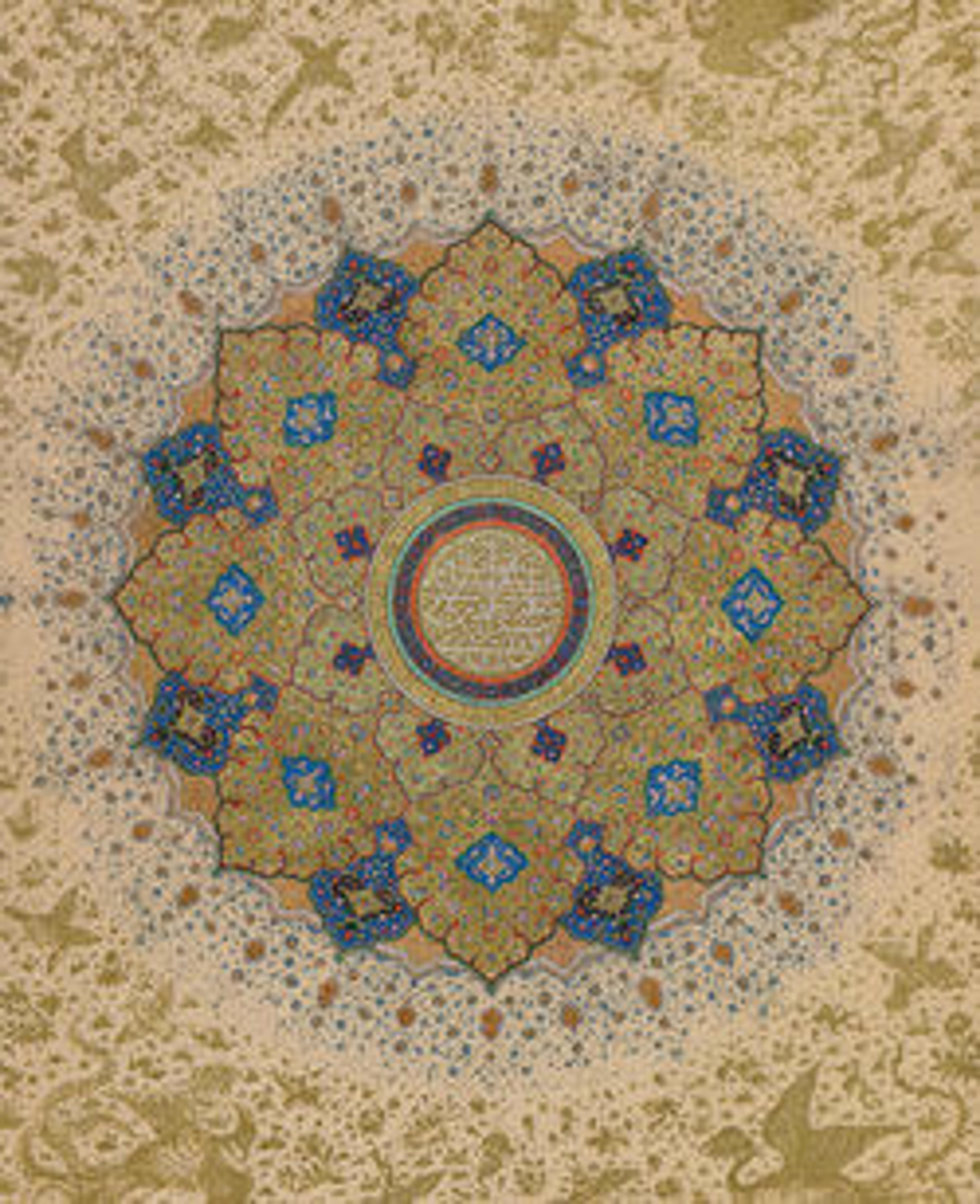A Gathering of Holy Men of Different Faiths
This painting is based upon a well-known Mughal painting on the theme of a gathering of holy men of different faiths. The main figures can be identified (from right to left) as Ravidas, Sena, Namdev, Aughar, Kamal, and Kabir. Though trained at the Mughal court, the artist Mir Kalan Khan moved to Lucknow, where he became the leading court painter of Shuja' al-Daula (r. 1754–75) and Asaf al-Daula (r. 1775–98), producing a substantial body of work in a style that was widely imitated.
Artwork Details
- Title: A Gathering of Holy Men of Different Faiths
- Artist: Mir Kalan Khan (active ca. 1730–75)
- Date: ca. 1770–75
- Geography: Attributed to India, Lucknow
- Medium: Opaque watercolor and gold on paper
- Dimensions: H. 10 1/2 in. (26.7 cm)
W. 7 1/2 in. (19.1 cm) - Classification: Codices
- Credit Line: Purchase, Friends of Islamic Art Gifts, 2009
- Object Number: 2009.318
- Curatorial Department: Islamic Art
More Artwork
Research Resources
The Met provides unparalleled resources for research and welcomes an international community of students and scholars. The Met's Open Access API is where creators and researchers can connect to the The Met collection. Open Access data and public domain images are available for unrestricted commercial and noncommercial use without permission or fee.
To request images under copyright and other restrictions, please use this Image Request form.
Feedback
We continue to research and examine historical and cultural context for objects in The Met collection. If you have comments or questions about this object record, please contact us using the form below. The Museum looks forward to receiving your comments.
